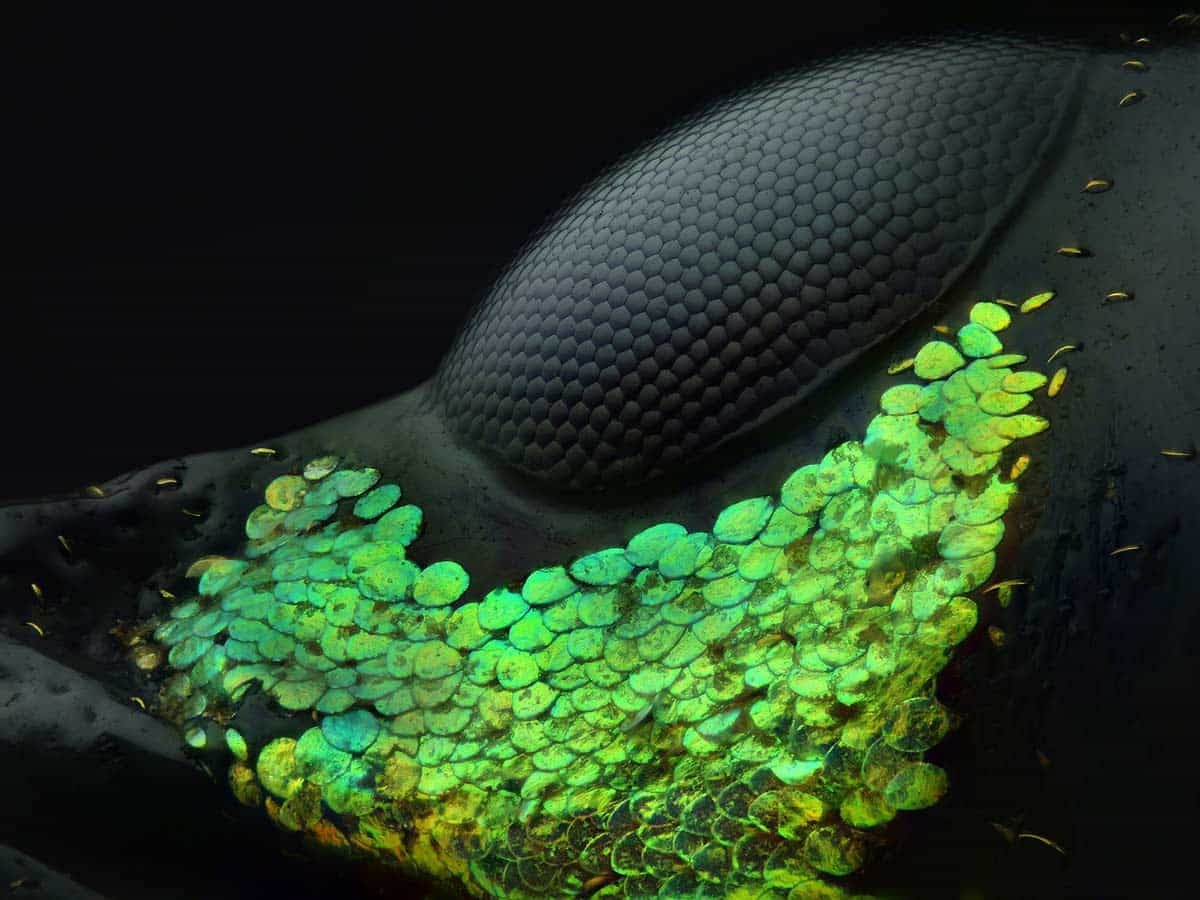Stunning Weevil Eye Wins Forty-Fourth Annual Nikon Small World Competition

Posted on October 11, 2018
Nikon Instruments Inc. today announced the winners of the forty-fourth annual Nikon Small World Photomicrography Competition. First place was awarded to Emirati photographer Yousef Al Habshi, who sees the eyes as the windows to stunning insect artwork and research. The 2018 winning image captures part of the compound eyes and surrounding greenish scales of an Asian Red Palm weevil. This type of Metapocyrtus subquadrulifer beetle is typically less than 11 mm (0.43 in) in size and is found in the Philippines.
Al Habshi captured the image using a reflected light technique and stacking of hundreds of images. The winning image is a compilation of more than 128 micrographs. According to Al Habshi, “the main challenge was to show the black body against the black background without overexposing the skin and scales.” He was able to strike the perfect balance by controlling the background distance from the subject and using deft lighting and sample positioning.
“Because of the variety of coloring and the lines that display in the eyes of insects, I feel like I’m photographing a collection of jewelry,” said Al Habshi. “Not all people appreciate small species, particularly insects. Through photomicrography we can find a whole new, beautiful world which hasn’t been seen before. It’s like discovering what lies under the Ocean’s surface.”
While beautiful to photograph, weevils present infestation problems world-wide and often destroy crops. Al Habshi’s photography has helped advance the work of his partner, Professor Claude Desplan, of New York University Abu Dhabi. His lab and Al Habshi’s photos have contributed a better understanding of the Red Palm Weevil and how to better control the population.
“The Nikon Small World competition is now in its 44th year, and every year we continue to be astounded by the winning images,” said Eric Flem, Communications Manager, Nikon Instruments. “Imaging and microscope technologies continue to develop and evolve to allow artists and scientists to capture scientific moments with remarkable clarity. Our first place this year illustrates that fact beautifully.”
Second place was awarded to Rogelio Moreno for his colorful photo of a Fern sorus, a clustered structure that produces and contains spores. The image was produced using image stacking and autoflorecence, which requires hitting the sorus with ultraviolet light. Each color represents a different maturity stage of each sporangium inside the sorus.
Saulius Gugis captured third place for his adorable spittlebug photo, captured using focus-stacking. This spittlebug can be seen in the process of making his “bubble house.” Spittlebugs produce the foam substance to hide from predators, insulate themselves from temperature fluctuations and to stay moist.
In addition to the top three winners, Nikon Small World recognized an additional 92 photos out over almost 2,500 entries from scientists and artists in 89 countries.
The 2018 judging panel included:
• Dr. Joseph Fetcho: Professor, Associate Chair of the Department of Neurobiology and Behavior at Cornell University.
• Dr. Tristan Ursell: Assistant Professor in the Department of Physics and at the Institute of Molecular Biology at the University of Oregon.
• Adam Dunnakey: Broadcast journalist at CNN International.
• Jacob Templin: Senior video producer at Quartz.
• Eric Clark (Moderator): Research Coordinator and Applications Developer at the National High Magnetic Field Laboratory at Florida State University.
For additional information, please visit www.nikonsmallworld.com, or follow the conversation on Facebook, Twitter @NikonSmallWorld and Instagram @NikonInstruments.
